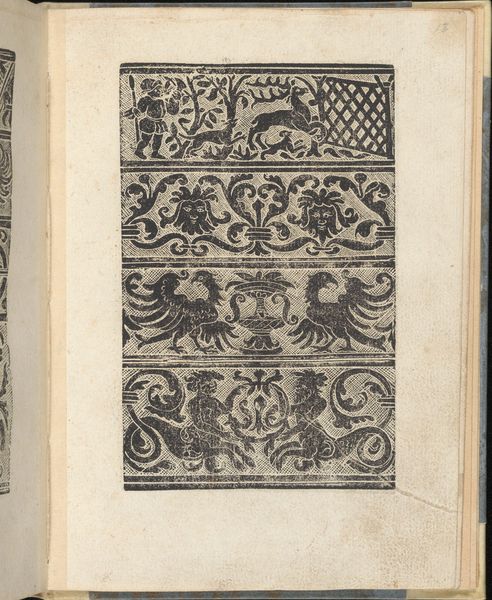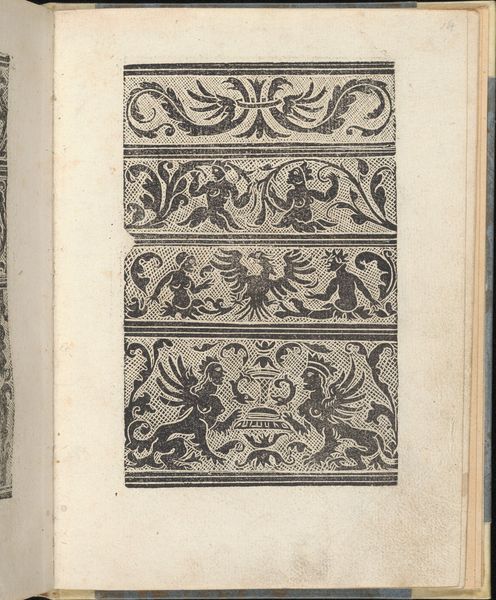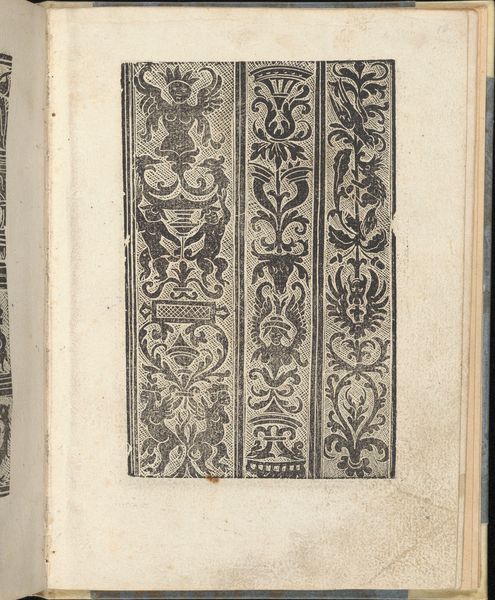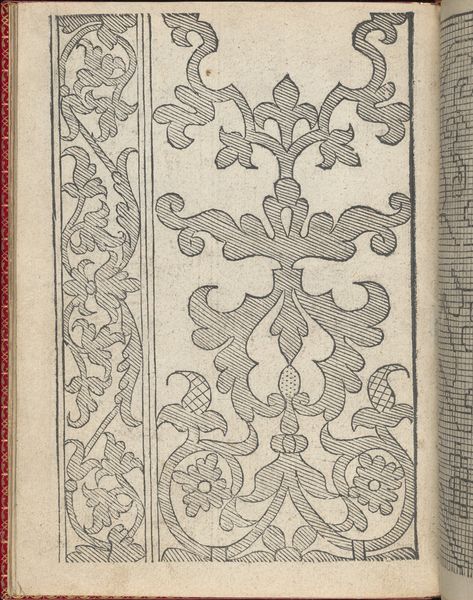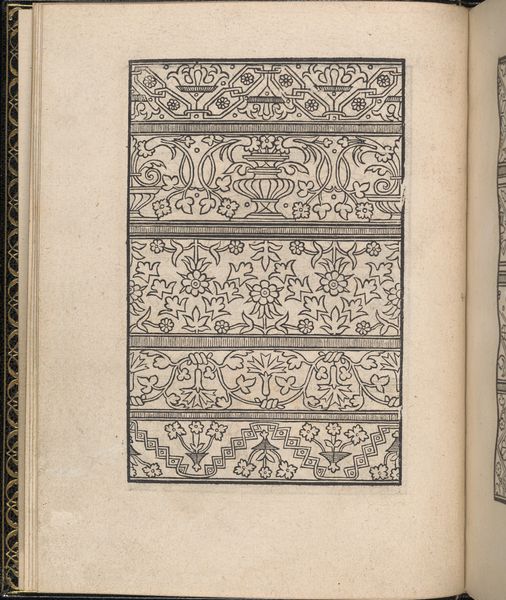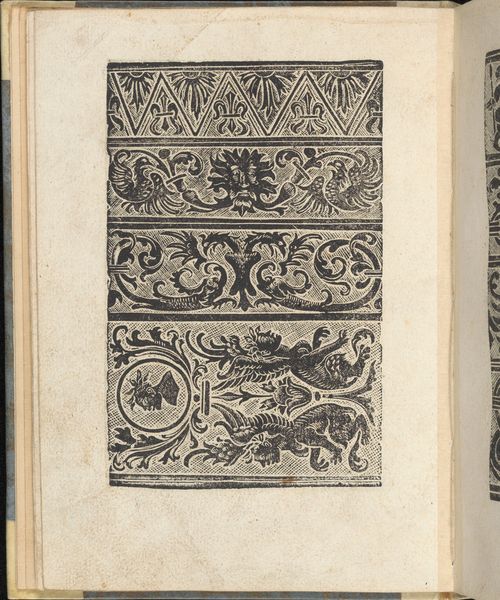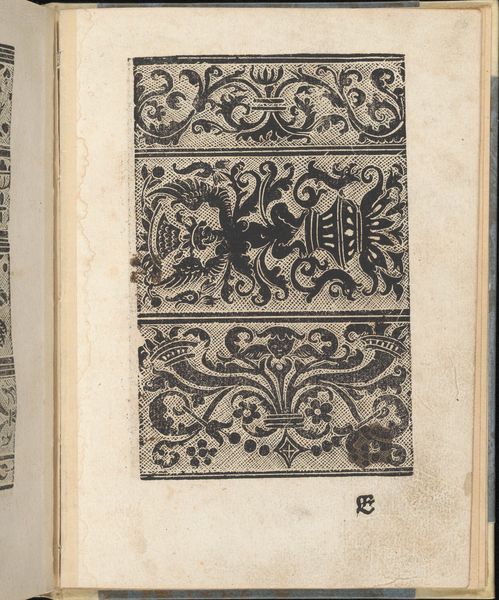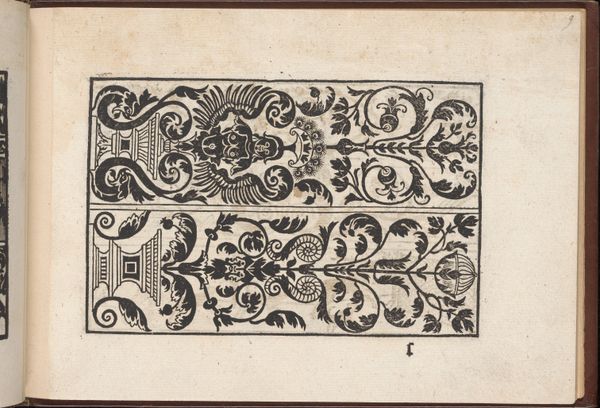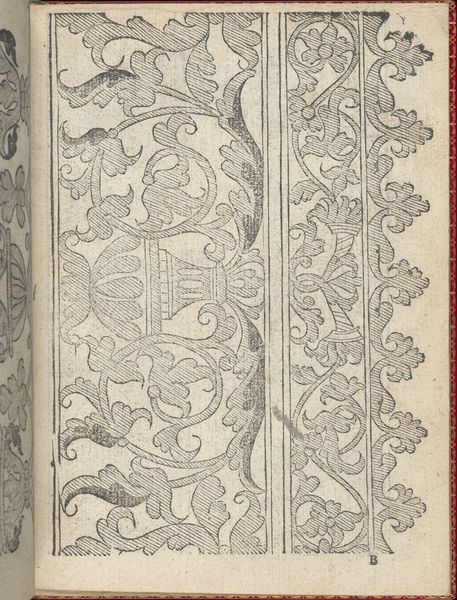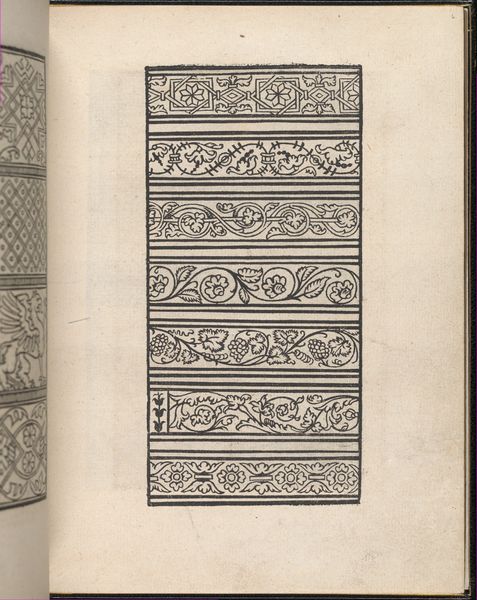
Les Secondes Oeuvres, et Subtiles Inventions De Lingerie du Seigneur Federic de Vinciolo Venitien, page 50 (recto) 1603
0:00
0:00
drawing, print, textile, woodcut
#
drawing
#
ink paper printed
# print
#
book
#
sketch book
#
textile
#
11_renaissance
#
geometric
#
woodcut
#
decorative-art
Dimensions: Overall: 9 7/16 x 6 1/2 in. (24 x 16.5 cm)
Copyright: Public Domain
Editor: Here we have a page, number 50 to be exact, from "Les Secondes Oeuvres, et Subtiles Inventions De Lingerie du Seigneur Federic de Vinciolo Venitien," created in 1603 by Federico de Vinciolo. It's a woodcut print on paper. The detail is amazing and so intricate, especially for a functional textile pattern! How does the composition strike you? Curator: The immediate impact lies in the grid structure; notice how the design elements are built upon this foundation, an almost pixelated construction. The symmetrical arrangements – winged figures mirrored above, canines flanking a central emblem below – speak to a formal organization typical of the period. The materiality too interests me; observe how the linear incisions, rendered in the print, simulate the weft and warp of textile production. This simulates dimensionality and visual tactility. Editor: So, the very nature of print mimics the fabric itself? Curator: Precisely. The woodcut technique, with its characteristic graphic quality, transforms into something almost haptic, suggesting threads interwoven. Look at how the density of the lines creates a kind of shading, implying depth within a fundamentally two-dimensional medium. Editor: That makes so much sense! I hadn't considered the texture created by the density of the lines. Is there a particular emphasis in decorative art towards formal balance or repeated motif? Curator: Yes, the repeated motifs underscore the decorative nature but equally highlight the structured principles by which this art is conceptualised and experienced. Do you see any deviations from the grid? Editor: Now that you mention it, those curvilinear details in the foliage around the canines subtly break the rigidity. So, the tension comes from the interplay of structure and... freedom? Curator: Freedom perhaps contained within a structure of visual organisation and experience, something like that. A balance and play of structure and gesture. Editor: Thanks for pointing out those fascinating aspects; now I see more layers.
Comments
No comments
Be the first to comment and join the conversation on the ultimate creative platform.

